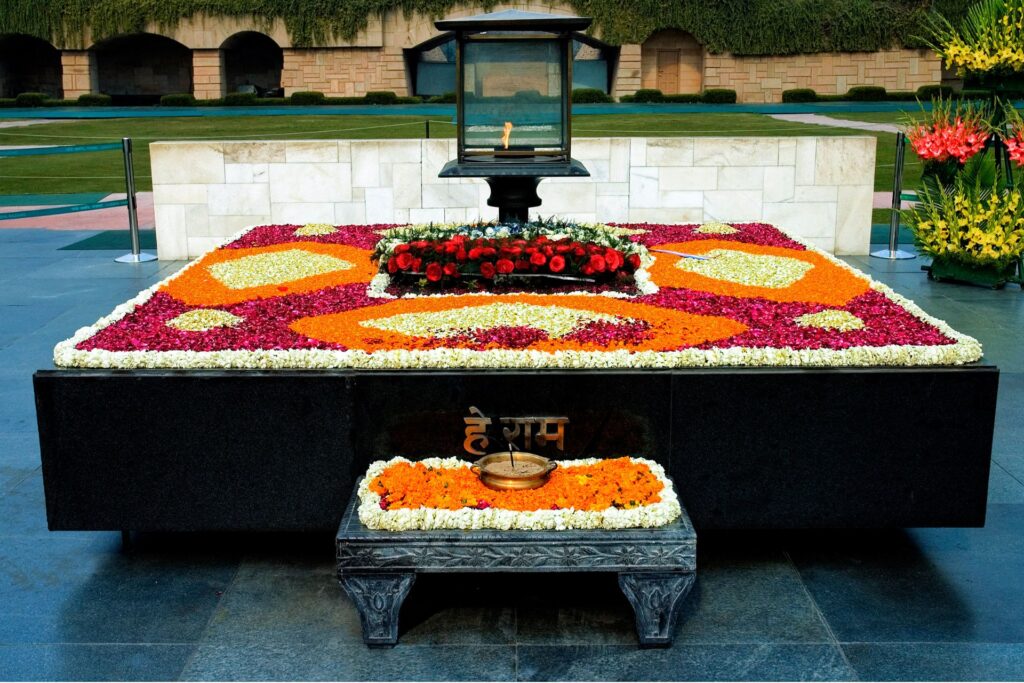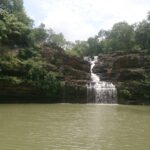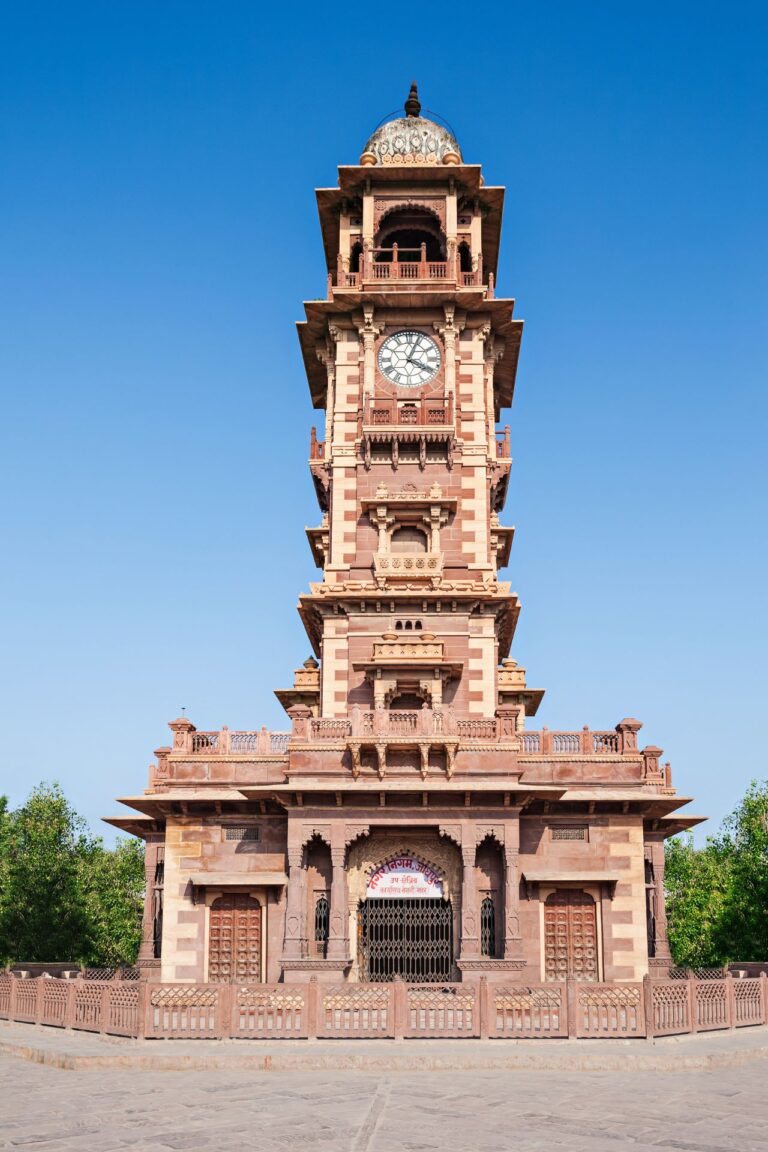Safari in Central India
12 Nights/13 Days
Delhi – (via Jabalpur) Kanha – Bandhavgarh – (via Khajuraho) Panna – (via Orchha and Jhansi) Agra – (via Sikandra) Delhi
Safari in Central India


Wildlife Wonders and Architectural Marvels
If you are a wildlife enthusiast, or simply wish to discover India’s abundant biodiversity, this itinerary is for you: experience the thrilling adventure of spotting the royal Bengal Tiger, as well as the stunning views of other animals and birds in three National Parks. Discover the exquisite architectural ruins of Orchha in between safaris, and complete your vacation with a visit to the breathtaking Taj Mahal.

Itinerary
Hello and welcome to India! When you arrive at Delhi Airport, you will be greeted in the arrival hall by our guide, who will accompany you to your hotel and assist you with check-in. Depending on your arrival time, you may choose to tour around or spend the day at leisure. Delhi is a mixing pot of religions, civilizations, age-old traditions, and cutting-edge tendencies. It owes its international culture and architectural style to the Mughal and British heritage. The influence of Mughal art and architecture can still be seen in the tiny streets lined with havelis, mosques, and food vendors selling real Mughlai cuisine in the Old City. In contrast, the British-built Imperial New Delhi features wide, tree-lined boulevards and notable buildings. The Delhi metro, nightclubs, and shopping malls now dot the landscape. Overnight, stay at hotel.
Embark on a sightseeing tour of Delhi. The tour starts with exploring the historical attractions of Old Delhi. Discover the iconic Red Fort spread over an area of 2 km, travel around the bustling market of Chandni Chowk, visit India’s largest mosque, Jama Masjid, and savour the authentic Mughlai cuisine. Also visit Raj Ghat, Mahatma Gandhi’s cremation site memorial. Later, proceed to Qutb Complex, a UNESCO World Heritage Site that houses the world’s tallest brick minaret – Qutab Minar. Then, move to Humayun’s Tomb, the first garden-tomb in the Indian subcontinent and the inspiration for several monuments including the Taj Mahal. Delhi takes a new dimension at dusk. Get mesmerized by the spectacular view of Delhi adorned with lights. Enjoy a drive pass India Gate and Embassy Lane. Overnight, stay at hotel.
The day begins with a visit to Kanha National Park, a tiger sanctuary in Madhya Pradesh, India’s heartland. Because the National Park is approximately 1000 kilometres from Delhi, take a trip to Jabalpur, the nearest airport to Kanha. After arriving, drive 170 kilometres (about 4 hours) to Kanha. Kanha National Park is well-known for its Bengal tigers, but it was made famous by Rudyard Kipling’s “Jungle Book.” The author was inspired by the lush forests, large meadows, and ravines, as well as wild species such as tigers, sloth bears, pythons, and elephants. It would not be incorrect to state that every animal character in the book is based on the park’s inhabitants. Kanha National Park is also recognised for its enormous antelope and deer populations, including the rare swamp deer (barasingha). When you arrive in Kanha, check into your accommodation and spend the day at your own. Overnight stay at hotel.
Start the day early in the morning to explore Kanha National Park. Traverse through the pristine landscape of the sal and bamboo forests to spot the tiger, leopard, barasingha, barking deer, jackal, gaur, sloth bear, black buck, fox, hyena, jungle cat, porcupine, civet and Indian wild dog. Seeing wild animals in their natural habitat is guaranteed to be an unforgettable experience. The first jeep safari starts early in the morning before breakfast and the second is in the afternoon. Both safaris last approximately three hours. In between game drives you can opt to relax at your hotel or discover The Kanha Museum inside the park. In the evening, visit Bamini Dadar, popularly called the “Sunset Point”, for a divine sunset view. Overnight, stay at hotel.
After spending the morning exploring Kanha’s jungle and its flora and animals, it’s time to learn about the culture of the Gondi and Baiga tribes near Maikal Hills. Before the commencement of Project Tiger, a conservation programme to save tigers from extinction and provide them with sanctuary in their natural habitats, semi-nomadic tribes lived in villages within Kanha National Park. Circumnavigate Narna settlement, an eco-village near Kahna. Houses are composed of mud and dried chaff, walls and floors are covered with traditional tattoos and designs, and organic farming is still practised. Spend the evening relaxing or going on an evening safari. Walk around the village to discover the customs of local people and reconnect with nature. Spend the evening at leisure or go for an evening safari. Overnight, stay at hotel.
In the morning, depart from Kanha and drive to Bandhavgarh National Park, located 240 km (approximately five hours) from Kanha. Sprawling over 105 km2, Bandhavgarh National Park is a tiger reserve and is home to some world renowned tigers such as Charger and Sita who is one of the world’s most photographed tigers. In India, Bandhavgarh boasts the largest concentration of tigers in their native habitat. “In any other park, you are lucky if you see a tiger,” says a saying about the park. You are unlucky in Bandhavgarh if you don’t spot (at least) one. The park has a significant population of breeding leopards, cheetahs, sambars, barking deer, and striped hyenas due to its rich biodiversity. When you get to Bandhavgarh, check into your hotel. Explore the location and learn about the mythological stories associated with it. Overnight, stay at hotel.
Today, go on a morning and afternoon safari to explore Bandhavgarh National Park and its rich wildlife. Before the sun rises, embark on a morning safari and witness the beautiful sunrise panorama. It is the best time for bird-watching and capturing the views of birds flying at eye-level. The park is home to more than 200 avifaunal species, including heron, painted stork, vultures, white breasted kingfisher, hawk eagle, crested serpent eagle and pairs of sarus cranes. Safari at Bandhavgarh National Park revolves around spotting the tigers and other animals. Sidhbaba temple and Chakradhara meadow are the regions where tigers are spotted the most, while Gopalpur region is ideal for bird-watching. Also, discover the ancient structures, statues and caves inside the park. Overnight, stay at hotel.
Early morning, check-out of the hotel and drive to Khajuraho, 210 km (approximately four hours) from Bandhavgarh. Worldwide renown belongs to Khajuraho’s sensual sculpture-adorned temples. The Khajuraho Group of Monuments, which were constructed during the Rajput Chandela dynasty (10th–13th century), are listed as UNESCO World Heritage Sites. Only 20 of the 85 Hindu and Jain temples that were originally present have survived the test of time. Explore the temples and artwork that represent the four main objectives of life: dharma, kama, artha, and moksha. Drive the remaining 50 kilometres (about an hour) to Panna after exploring Khajuraho. If you have the time, go to Panadava Falls. The Pandava brothers are said to have visited them while they were in exile, giving the Falls its name. Check into your hotel after you arrive in Panna, then spend the rest of the day at leisure. Overnight, stay at hotel.
Spend the day exploring the wildlife at Panna National Park. Start with a morning safari, then take some rest and later embark on an afternoon safari. Panna National Park is also a tiger reserve in India. Though the Park bagged the Excellence Award in 2007 as the “best maintained” National Park of the country by Tourism Ministry of India, it continues to be one of the better parks. Tigers are no doubt the major attraction of Panna. Other frequently sighted animals here include the sambhar, cheetal, langoor, wildboar, jackal, chinkara and chausingha. Cascading through the forests of Panna, the Ken River is home to crocodiles and vultures that can be easily spotted here. Between game drives, you can take a boat ride on Ken River and soak in the scenic beauty of the National Park. Overnight, stay at hotel.
Early morning, check-out from the hotel and drive to Jhansi, 250 km away (approximately five hours) to board an evening train to Agra. En route, visit Orchha. Just 15 km away from Jhansi, Orchha is a quaint town dating back to 16th century. The place justifies its name as Orchha literally means “hidden place”. The stunning monuments recount tales of conflicts between monarchs and emperors. A must-see list includes the Orchha Fort Complex, Jahangir Mahal, Chaturbhuj Temple, and Laxminarayan Temple. Drive onward to Jhansi Railway Station later to catch your train to Agra. Without seeing the commotion in Indian train stations and riding an express train, a trip to India isn’t complete. This is an enjoyable and convenient method to travel around India. Your tickets are always reserved in advance. When you get to Agra, get into a hotel and stay overnight.
Start the day by exploring the Taj Mahal built by Shah Jahan in the memory of his favourite wife, Mumtaz Mahal. Early morning is the best time to visit the monument as the sun rises and bathes it in a pinkish glow. Afterwards, visit the legendary Red Fort of Agra that is a UNESCO World Heritage Site. Showcasing the splendid Mughal architecture, the fort houses some notable buildings such as Moti Masjid, Jahangir’s Palace, Shīsh Mahal, and Musamman Burj. Looking towards the Taj Mahal over the Yamuna River from the ramparts of Agra Fort is mesmerizing. This is the view the king had when he was imprisonned by his son until his death when he was then buried besides his wife at the Taj Mahal. Later explore Shilpgram exhibiting the art and culture of Agra. Overnight, stay at hotel.
After breakfast, check-out from hotel and drive to Delhi, 240 km (approximately four hours) from Agra. En route, take a halt at Sikandra to visit the Tomb of Akbar the Great. The tomb of the great emperor is an architectural marvel showcasing the splendid Mughal architectural style. Akbar personally started building the mausoleum, and his son Jahangir finished it after his death. The Taj Mahal’s four white marble minarets can be seen at the tomb’s entry from the south gate. Once in Delhi, check into your accommodation. The rest of the day is free for you to do some last-minute shopping at the neighbourhood markets or simply unwind in your hotel room and take advantage of its amenities. Overnight, stay at hotel.
Today your India travel comes to an end. We arrange your drop to Delhi Airport, from where you will board your flight back home. If required, our representative will be at hand to assist you with a smooth check-out from the hotel and escort you to the airport. We advise you to arrive at the airport at least 3 hrs prior to departure and keep your passport and printout of airline ticket handy to avoid last minute hassles. This itinerary is only a slice of the wonderful diversity and beauty that India has to offer and we hope that you will return soon to discover more. Namaste!
